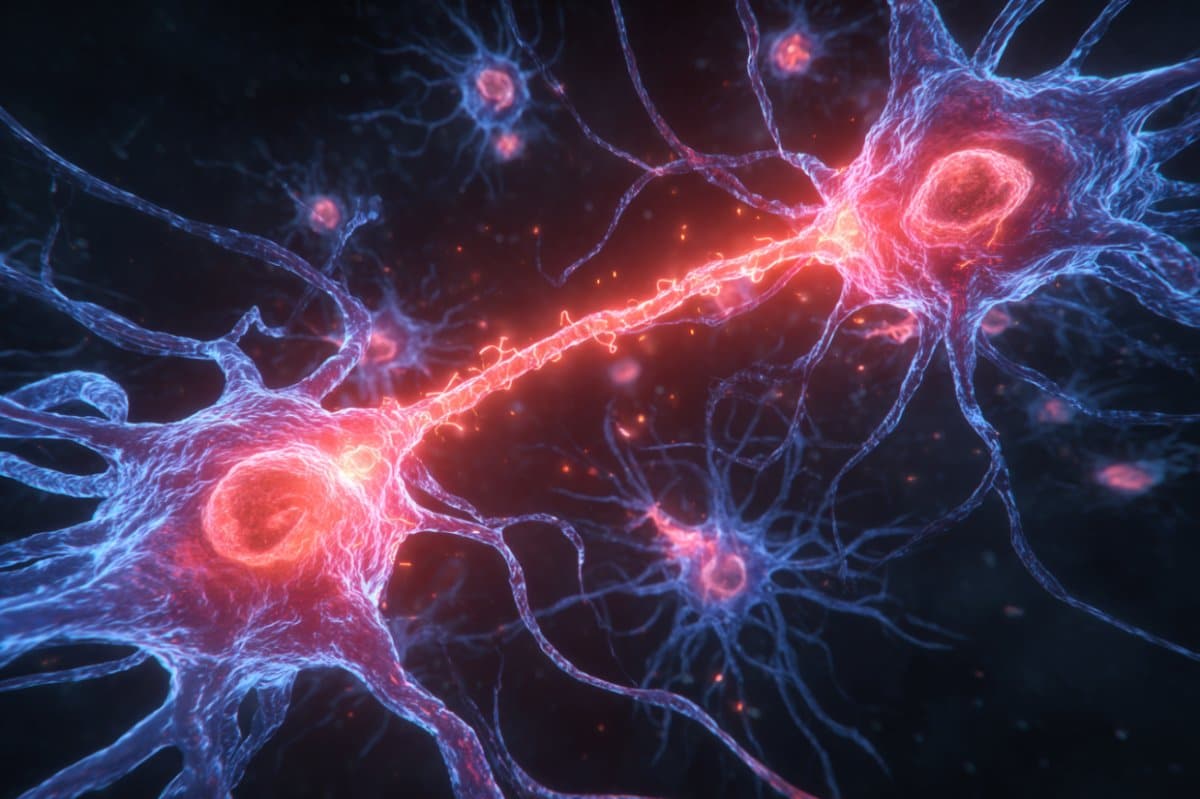Summary: A new study reveals that chemotherapy-induced nerve pain arises from a stress response in immune cells that triggers inflammation and neurotoxicity. Researchers found that activating a cellular stress sensor called IRE1α causes nerve damage and pain during chemotherapy, but blocking it prevents both in mice.
Patients with higher IRE1α activity also experienced more severe neuropathy, confirming the connection in humans. The discovery points to a promising new treatment target that could spare cancer patients from one of the most painful side effects of life-saving therapy.
Key Facts
- Root Cause Identified: Chemotherapy activates the IRE1α stress sensor in immune cells, driving inflammation and nerve injury.
- Prevention Possible: Blocking IRE1α in mice prevented pain and nerve damage entirely, suggesting a therapeutic pathway.
- Clinical Link: Cancer patients with high IRE1α activation were most likely to develop severe neuropathy.
Source: Wake Forest University
Scientists at Wake Forest University School of Medicine, in collaboration with researchers at Weill Cornell Medicine, have made a breakthrough in understanding why many cancer patients develop nerve damage after chemotherapy.
Their new study reveals that a stress response inside certain immune cells can trigger this debilitating side effect. This discovery could open the door to new ways to prevent or treat nerve damage in cancer patients.

The study was published online today in Science Translational Medicine.
Chemotherapy-induced peripheral neuropathy is a common and often severe side effect of cancer treatment, especially with drugs like paclitaxel. It can cause tingling, numbness and pain in the hands and feet, sometimes forcing patients to stop life-saving treatment early.
Up to half of all patients receiving chemotherapy may experience this condition, but until now, the exact cause has remained a mystery.
To better understand this nerve toxicity that could be painful, scientists used a well-established mouse model that closely reflects the nerve problems experienced by people undergoing cancer treatment. This model allowed researchers to observe how a specific immune cell pathway, known as IRE1α, contributes to triggering inflammation that led to neurotoxicity and pain.
By blocking the IRE1α pathway in the immune cells of these mice, either through genetic techniques or with an IRE1a inhibitor, the team was able to prevent the development of nerve damage, pain and toxic inflammation.
The researchers also studied a group of patients from Atrium Health Wake Forest Baptist’s National Cancer Institute-designated Comprehensive Cancer Center.
The patients were receiving chemotherapy for gynecological cancers, collecting blood samples before and after treatment to measure IRE1α activity in their immune cells.
They found that patients with higher IRE1α activation were more likely to develop severe neuropathy due to chemotherapy, directly linking the mouse model findings to patient outcomes.
Key Findings
- Chemotherapy activates a stress sensor (IRE1α) in immune cells, triggering inflammation and nerve damage.
- Blocking this sensor in mice prevented nerve pain and damage, suggesting a new treatment target.
- In patients, higher activation of this stress sensor in blood cells was linked to more severe nerve symptoms and also to the initiation of neuropathy symptoms.
“Our research shows that a stress response inside immune cells is a key contributor to chemotherapy-induced neuropathy that could be painful and debilitating. By targeting this pathway, we may be able to protect patients from one of the most challenging side effects of cancer treatment,” said E. Alfonso Romero-Sandoval, M.D., Ph.D., professor of anesthesiology at Wake Forest University School of Medicine and the study’s corresponding author.
“Our study opens the opportunity to further explore if this pathway could be used to predict what patients will develop this condition and therefore could help clinicians implement patient-tailored treatments,” Romero-Sandoval said.
The discovery could lead to new drugs that block this pathway, helping patients stay on their cancer treatment without suffering from painful side effects.
According to Romero-Sandoval, who is a member of the Atrium Health Wake Forest Baptist Comprehensive Cancer Center, this is the first study to show that the IRE1α stress sensor in immune cells is directly linked to nerve damage from chemotherapy.
The team plans to conduct larger clinical studies to confirm these findings and test whether the IRE1α pathway could be used as a biomarker for disease progression and if drugs that block this stress sensor can safely prevent or reduce nerve damage in cancer patients.
They also hope to explore whether this approach could help with other types of nerve pain. Interestingly, an IRE1a inhibitor is currently in clinical trials to improve anti-cancer effects of chemotherapy, including paclitaxel.
Funding: This research was supported by the National Cancer Institute and the National Institute of Neurological Disorders and Stroke of the National Institutes of Health, as well as the U.S. Department of Defense. Additional support came from the Atrium Health Wake Forest Baptist Comprehensive Cancer Center.
Key Questions Answered:
A: A stress response in immune cells, triggered by the IRE1α sensor, initiates inflammation that harms nerves.
A: By blocking IRE1α in mice, researchers stopped pain and nerve damage—and saw the same molecular pattern in patients who developed neuropathy.
A: It could lead to drugs that protect patients from nerve pain without interfering with chemotherapy’s anti-cancer effects.
About this neurology and cancer research news
Author: Myra Wright
Source: Wake Forest University
Contact: Myra Wright – Wake Forest University
Image: The image is credited to Neuroscience News
Original Research: Closed access.
“Leukocyte-intrinsic ER stress responses contribute to chemotherapy-induced peripheral neuropathy” by E. Alfonso Romero-Sandoval et al. Science Translational Medicine
Abstract
Leukocyte-intrinsic ER stress responses contribute to chemotherapy-induced peripheral neuropathy
Chemotherapy-induced peripheral neuropathy (CIPN) is the most prevalent and limiting side effect of paclitaxel treatment in patients with cancer. CIPN affects sensory neurons through neuroinflammatory mechanisms, but how immune cells sense and interpret systemic paclitaxel exposure during treatment is unclear.
Here, we found that paclitaxel administration activated the endoplasmic reticulum (ER) stress sensor inositol-requiring enzyme 1α (IRE1α) in circulating and dorsal root ganglion–resident myeloid cells, engendering an inflammatory milieu that promotes CIPN.
Mechanistically, paclitaxel induced the overproduction of mitochondria-derived reactive oxygen species (ROS) that provoked ER stress and IRE1α hyperactivation in macrophages.
This process reprogrammed macrophages toward an inflammatory state characterized by IRE1α-dependent production of TNF-α, IL-1β, PGE2, IL-6, IL-5, GM-CSF, MCP-1, and MIP-2.
Ablation of IRE1α in leukocytes, or treatment with a selective IRE1α pharmacological inhibitor, prevented dorsal root ganglion neuroinflammation and CIPN-related pain behaviors in mice.
Furthermore, the development and severity of CIPN in patients with gynecological cancer were associated with the status of IRE1α activation in their circulating leukocytes.
Our study uncovers leukocyte-intrinsic IRE1α as a key mediator of CIPN and suggests that targeting its dysregulated activation could help mitigate CIPN in patients with cancer who are receiving paclitaxel.






